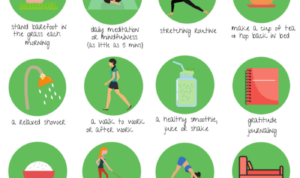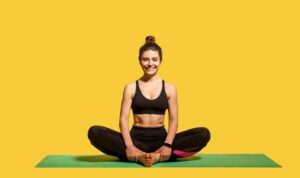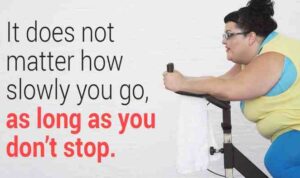Yoga for Beginners sets the stage for those new to the practice, offering a glimpse into the world of yoga with simplicity and clarity. As beginners embark on this journey, they are guided through the essentials of yoga in a manner that is both informative and inspiring.
Overview of Yoga for Beginners
Yoga is a mind-body practice that combines physical postures, breathing techniques, and meditation. It is known for its numerous mental and physical benefits, making it a popular choice for beginners looking to improve their overall well-being.
Importance of Starting with Basic Yoga Poses
When starting out with yoga, it is crucial to begin with basic poses to build a strong foundation. These poses help beginners develop proper alignment, flexibility, and strength before moving on to more advanced practices.
Mental and Physical Benefits of Yoga Practice for Beginners
- Improved flexibility: Yoga helps increase flexibility by stretching and lengthening muscles.
- Stress relief: The combination of breathing exercises and mindfulness in yoga can help reduce stress and promote relaxation.
- Strength building: Yoga poses not only improve flexibility but also help build strength in various muscle groups.
- Enhanced focus and concentration: The mental aspect of yoga practice can improve focus, concentration, and mental clarity.
Essential Equipment for Beginners
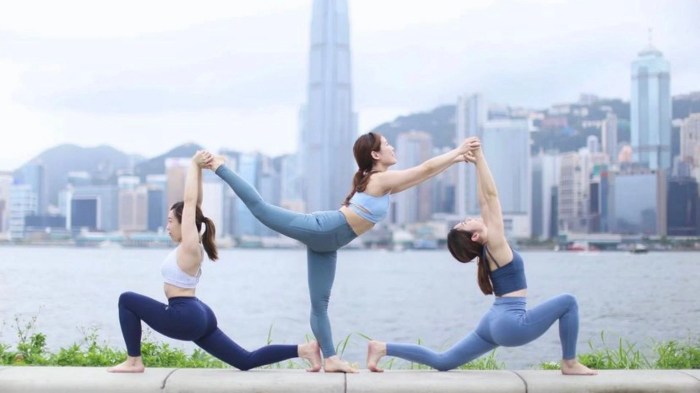
When starting out with yoga, having the right equipment can make a significant difference in your practice. Here are some essential items beginners should consider:
Yoga Mat
- A yoga mat provides cushioning and grip during poses, preventing slips and injuries.
- Look for a mat that is thick enough to support your joints, yet not too bulky to carry around.
- You can find quality yoga mats at sporting goods stores, yoga studios, or online retailers like Amazon.
Yoga Blocks, Yoga for Beginners
- Yoga blocks help with alignment and provide support for poses that may be challenging for beginners.
- Opt for lightweight foam blocks that are easy to handle and come in various sizes for versatility.
- You can purchase yoga blocks at yoga studios, fitness stores, or online yoga equipment retailers.
Yoga Strap
- A yoga strap assists in reaching and maintaining proper alignment in poses, especially for beginners with limited flexibility.
- Choose a durable strap with adjustable loops to accommodate different body sizes and levels of flexibility.
- Yoga straps are readily available at yoga studios, sports equipment stores, and online yoga retailers.
Basic Yoga Poses for Beginners
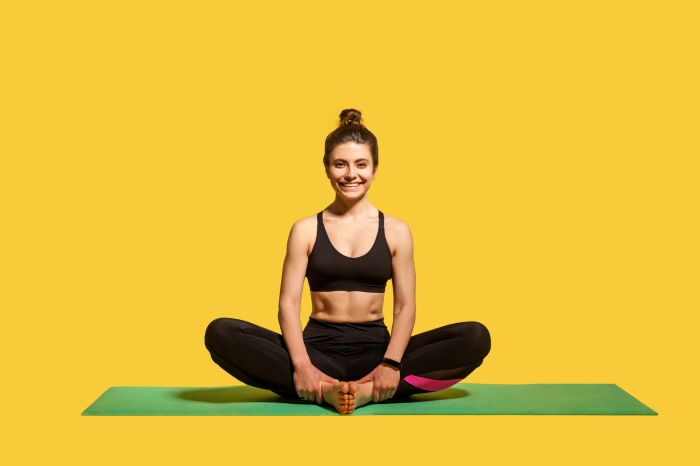
Incorporating basic yoga poses into your practice can help build a strong foundation and improve flexibility and strength.
Mountain Pose (Tadasana)
- Stand tall with feet hip-width apart, grounding through all four corners of the feet.
- Engage the thighs, lift the kneecaps, and lengthen the tailbone towards the floor.
- Roll the shoulders back and down, extending the arms alongside the body with palms facing forward.
Downward Facing Dog (Adho Mukha Svanasana)
- Start on your hands and knees, then lift your hips towards the ceiling to form an inverted V shape.
- Press firmly into the hands and feet while lengthening the spine and relaxing the head between the arms.
- To modify, bend the knees slightly or place hands on blocks for extra support.
Warrior II (Virabhadrasana II)
- Step one foot back and rotate it 90 degrees, keeping the front foot pointing forward.
- Bend the front knee directly over the ankle while extending the arms out to the sides at shoulder height.
- Gaze over the front fingertips and engage the core for stability.
Child’s Pose (Balasana)
- Kneel on the floor with toes touching and knees apart, then sit back on the heels.
- Extend the arms forward with palms resting on the floor and forehead resting on the mat.
- To make it more accessible, place a bolster or folded blanket under the hips for support.
Establishing a Routine
Establishing a consistent yoga practice routine is crucial for beginners to progress and reap the full benefits of yoga. It helps in building strength, flexibility, and mental clarity over time. Here are some tips and strategies to help beginners set realistic goals and stay motivated in their yoga journey.
Setting Realistic Goals
- Start small: Begin with shorter sessions and gradually increase the duration as you build strength and flexibility.
- Focus on consistency: Aim to practice yoga regularly, even if it’s just for a few minutes each day. Consistency is key to seeing progress.
- Listen to your body: Be mindful of your body’s limitations and avoid pushing yourself too hard. Set achievable goals that align with your current fitness level.
- Celebrate small victories: Acknowledge and celebrate your progress, no matter how small. This will help you stay motivated and committed to your practice.
Staying Motivated
- Find a buddy: Partnering up with a friend or joining a yoga class can help you stay accountable and motivated to keep up with your practice.
- Explore different styles: Keep your practice interesting by trying out various yoga styles and classes to prevent boredom and keep you engaged.
- Reward yourself: Treat yourself to a small reward for sticking to your yoga routine, whether it’s a new yoga mat, a relaxing bath, or a healthy snack.
- Track your progress: Keep a journal or use a yoga app to track your progress and see how far you’ve come since starting your yoga journey. This can be a great source of motivation.
Breathing Techniques for Beginners
Proper breathing is an essential component of yoga practice as it helps to calm the mind, increase focus, and improve overall body awareness. By incorporating different breathing techniques, beginners can enhance their yoga experience and deepen their practice.
Diaphragmatic Breathing
- Also known as belly breathing, diaphragmatic breathing involves inhaling deeply through the nose, allowing the belly to expand.
- Exhale slowly and fully through the mouth, contracting the belly towards the spine.
- This technique helps to reduce stress, increase oxygen flow, and improve lung capacity.
Ujjayi Breath
- Ujjayi breath, or ocean breath, is characterized by a gentle constriction at the back of the throat during inhalation and exhalation.
- It produces a soft hissing sound, helping to regulate the breath and focus the mind.
- Ujjayi breath can enhance concentration, build heat in the body, and promote relaxation.
Alternate Nostril Breathing
- This technique involves closing one nostril with the thumb and inhaling through the other nostril.
- After inhaling, switch to closing the other nostril with the ring finger and exhale through the opposite nostril.
- Alternate nostril breathing can help balance the left and right hemispheres of the brain, relieve stress, and improve focus.
Benefits of Breathwork
- Improves oxygen circulation in the body, aiding in detoxification and energy levels.
- Reduces anxiety, promotes relaxation, and calms the nervous system.
- Enhances mental clarity, focus, and overall mindfulness during yoga practice.








